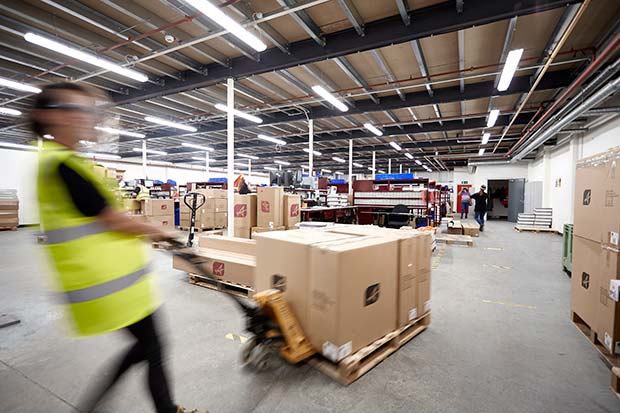With energy prices soaring and carbon reduction a top priority for businesses, Rachel Morris at Ansell Lighting, looks at how smart lighting systems can help firms reduce energy use and make impressive cost savings. For many businesses in the logistics industry, warehouse lighting represents a major expense and source of energy use. As I write this, energy prices are at an all time high and as we move towards net zero 2050, organisations are under heightened pressure to find long term solutions to cut their energy use and carbon emissions.
 An almost instant solution to the energy use challenges we face is smart lighting, an advanced technology that provides quantifiable cost benefits and real energy savings.
An almost instant solution to the energy use challenges we face is smart lighting, an advanced technology that provides quantifiable cost benefits and real energy savings.
Designed to ensure that lighting is used only where and when it is needed, smart lighting is an automated system that gives users complete control over lighting use, output levels and colour temperatures – all of which impact energy use. It also eliminates any reliance on human intervention, – reducing the risk of users accidentally leaving the lights on and wasting energy.
Easily installed, most smart lighting systems can be simply fitted like a normal lamp or switch. They are controlled and hosted on the cloud so there is no hub or wiring requirement and are simple to set up and operate via Bluetooth and Wi-Fi.
There are many smart lighting options available that can have a huge impact on energy use in warehouse and office spaces. For maximum benefit, a fully connected system embedded with technology such as OCTO powered by Casambi is a must. This enables numerous luminaires to be linked together and controlled, allowing different scenes, groups and schedules to be created as required. Lighting can be set to come on automatically at the start of the working day for example or colour temperature can be programmed to become brighter during the late afternoon as natural day light begins to fade.
Easy to operate, connected systems can be pre-programmed to operate at specific times, activated remotely, programmed to respond to voice or motion or even integrated with eco systems such as Alexa. In addition to a pre-programmable system, there are also many smart lighting products to consider which regulate energy use by controlling the natural light available.
Daylight harvesting systems for example reduce the need for electric lighting during periods of high-level daylight, intuitively offsetting natural daylight against electric lighting to achieve targeted levels of illumination. Products with intuitive motion sensors, and presence and absence detection lighting can also be used to control lighting use, automatically turning lights off when spaces are unoccupied. Ultra-effective, The Carbon Trust estimates that the use of automatic sensors alone can cut energy usage for lighting by up to 40%.
In spaces where lighting is required constantly, corridor functionality options are another great solution that prevent energy wastage. They ensure lighting only operates at 100% output when presence is detected, reducing unnecessary energy consumption.
To take the benefits of smart lighting systems one step further, it is also worth highlighting the importance of using low-energy LEDs in conjunction with the technology. Compared with other light sources, LED’s are extremely efficient and can take energy and cost savings to a whole new level. Calculations from The Climate Group estimate that simply switching existing lamps and luminaires to LEDs could save more than 1,400 million tons of CO2 globally. A huge saving which can be accelerated further when combined with a smart lighting system.




Comments are closed.